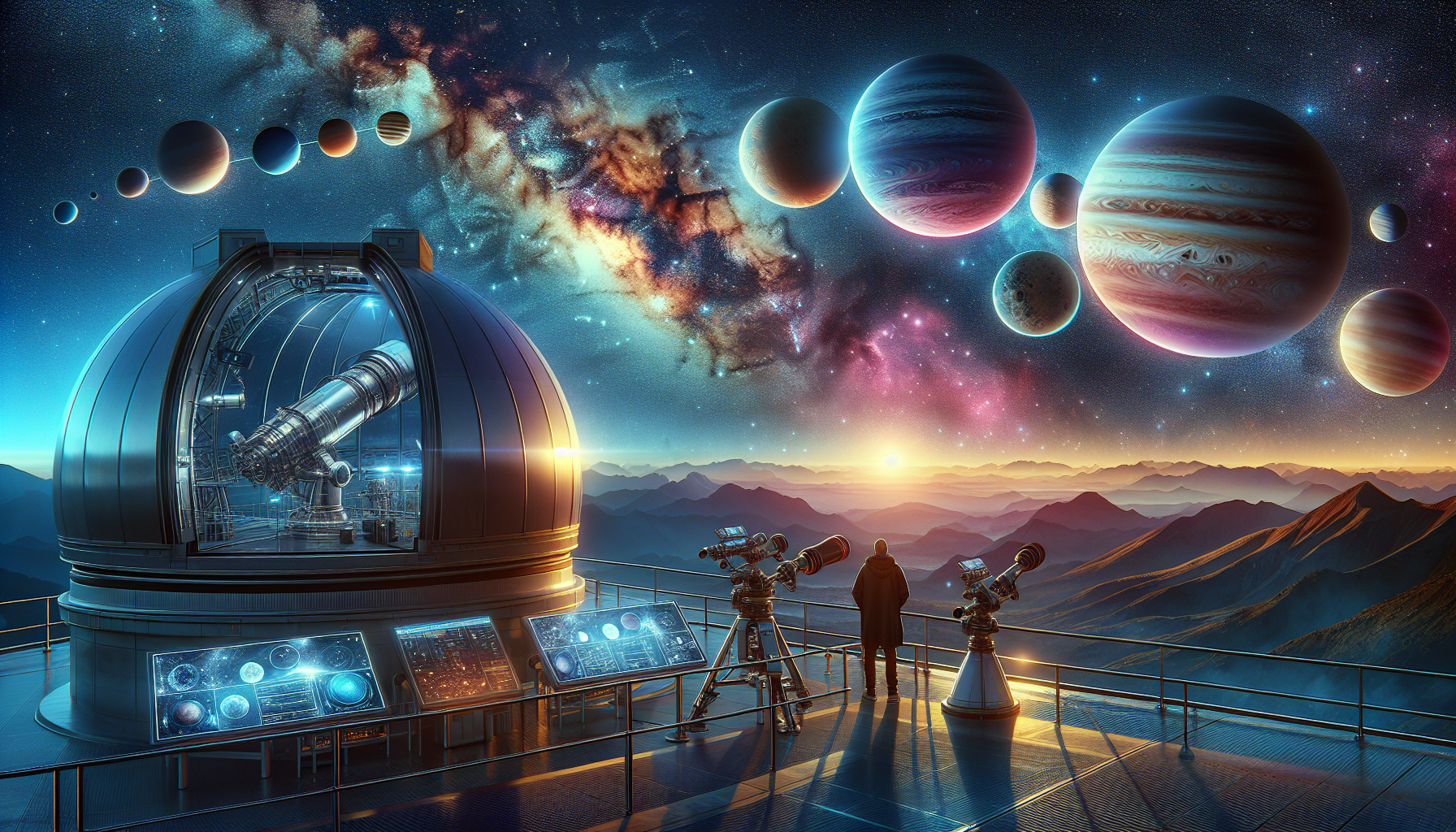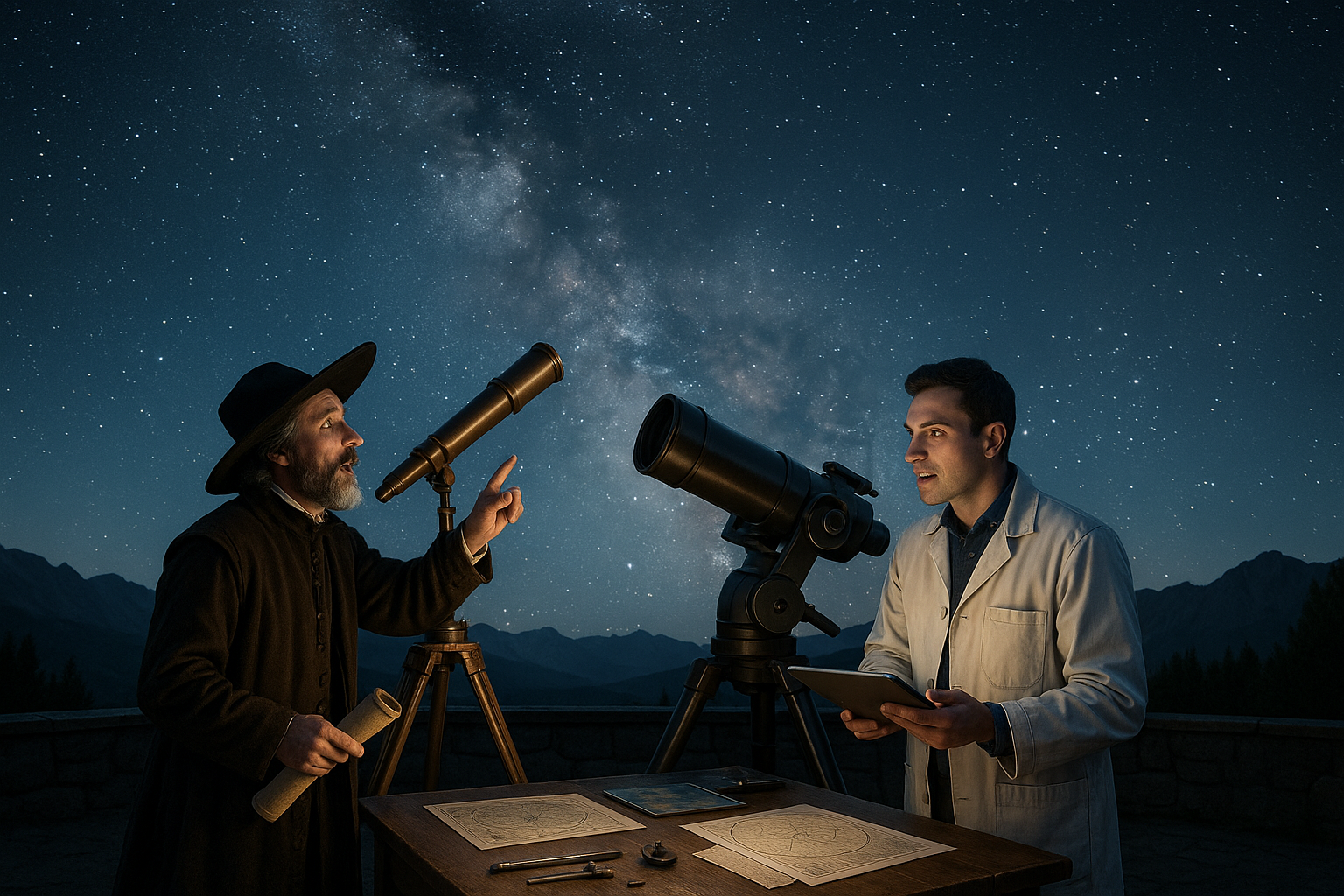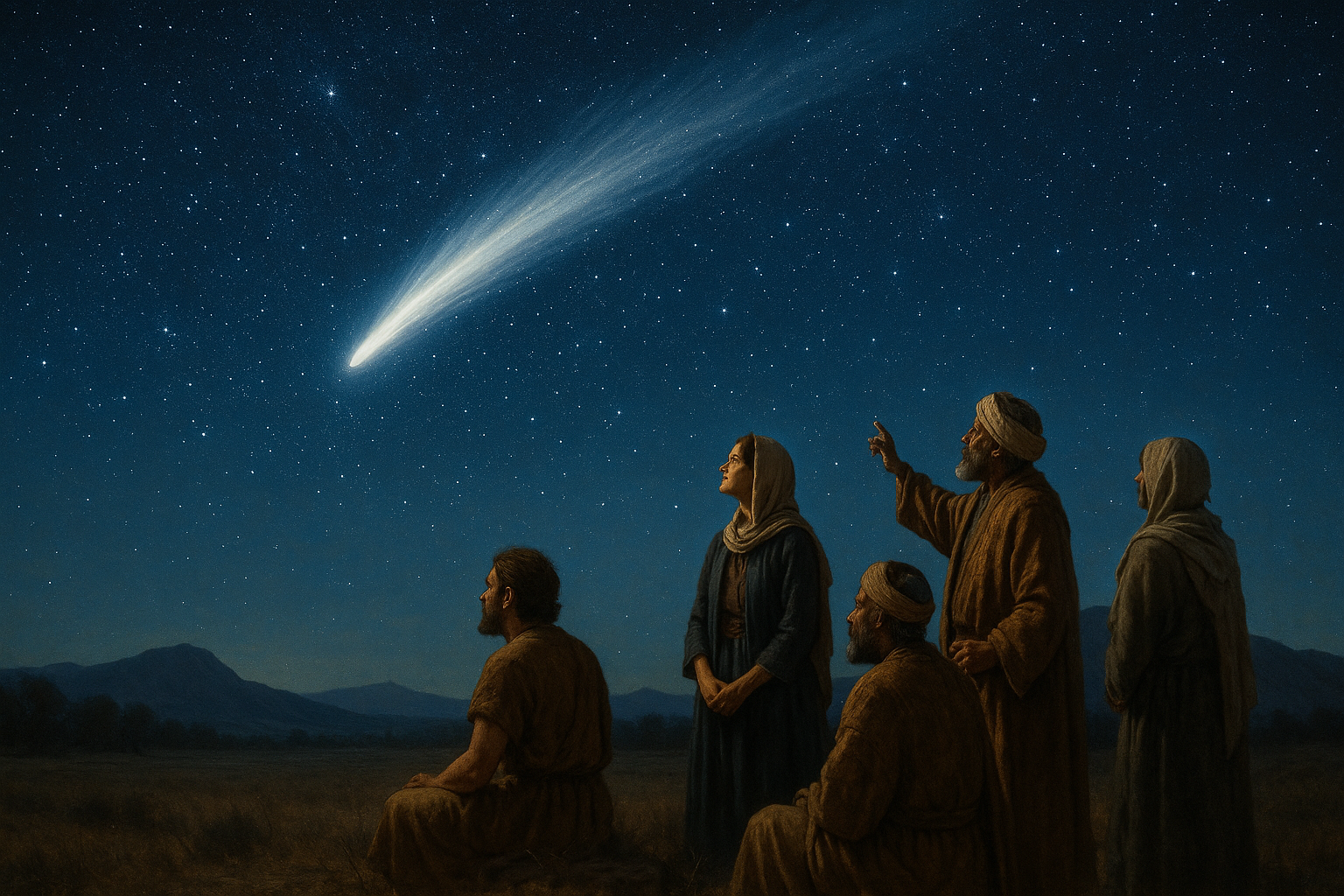In the vast, inky expanse of the cosmos, a symphony of celestial bodies performs an intricate ballet. This grand performance, unfolding over billions of years, captivates not only seasoned astronomers but also anyone who gazes upwards on a clear night. The dance of the planets, as they weave their orbits around the Sun, is a spectacle that has intrigued humanity since ancient times. It has inspired countless myths, guided explorers across uncharted seas, and sparked scientific revolutions. Today, as we stand at the forefront of technological advancement, we find ourselves with the tools to decode these celestial movements with unprecedented precision. 🔭✨
Our journey into the mysteries of planetary motion begins with a look back in time, to the early astronomers who first mapped the heavens. Ancient civilizations, from the Babylonians to the Greeks, observed the wandering stars—planets that moved against the backdrop of the seemingly fixed constellations. They recorded their positions and tried to make sense of their paths through the sky. These early efforts laid the groundwork for what would become a monumental shift in our understanding of the universe. The shift from a geocentric to a heliocentric model, championed by Copernicus and later refined by Kepler and Galileo, marked the dawn of modern astronomy. It was Kepler, with his three laws of planetary motion, who revealed the elliptical orbits of planets, shattering the long-held belief in perfect circular paths.
As we delve deeper into the celestial dance, we uncover the role of gravity—a force that keeps the planets tethered to their star, guiding them along their elliptical orbits. Sir Isaac Newton’s groundbreaking work on gravity provided the mathematical framework to explain why planets move as they do. His laws of motion and universal gravitation not only explained the movements of the planets but also laid the foundation for physics as we know it. Today, we continue to build upon Newton’s work, employing sophisticated telescopes and space probes to gather data, refine our models, and explore new frontiers. From the precise tracking of planetary transits to the study of orbital resonances, each observation brings us closer to understanding the intricate choreography of the solar system.
In this exploration of planetary motion, we will cover several key topics that illuminate the complexities of this celestial dance. We will examine the historical evolution of our understanding, from the ancient observations to the revolutionary ideas of the Renaissance. We will delve into the laws of physics that govern planetary movements, exploring the intricate balance of forces that keeps our solar system in harmony. Additionally, we will look at modern techniques for observing and predicting planetary motion, including the role of technology in enhancing our cosmic vision. Finally, we will consider the implications of our understanding of planetary motion for space exploration and the search for extraterrestrial life. Join us as we embark on this fascinating journey through space and time, unlocking the secrets of the planetary dance and discovering what they reveal about our place in the universe. 🌌🚀
Understanding the Basics of Planetary Motion
Planetary motion has fascinated humanity for centuries, drawing curious minds into the mysteries of our universe. The intricate dance of planets around the sun and their interactions with each other form the foundation of celestial mechanics. This scientific domain explores how and why planets move, and it is crucial for understanding both our solar system and exoplanetary systems beyond. The fundamental principles governing planetary motion are rooted in physics, particularly in Newton’s laws of motion and universal gravitation, which provide a comprehensive framework for predicting and explaining the movement of celestial bodies.
The cornerstone of understanding planetary motion is Kepler’s Laws, formulated by Johannes Kepler in the early 17th century. These laws describe how planets orbit the sun in elliptical paths, with the sun at one focus of the ellipse. Kepler’s First Law, the Law of Ellipses, shatters the ancient belief in perfect circular orbits and introduces the more accurate elliptical model. His Second Law, the Law of Equal Areas, states that a line segment joining a planet and the sun sweeps out equal areas during equal intervals of time. This implies that planets move faster when closer to the sun and slower when farther away. Lastly, Kepler’s Third Law, the Law of Harmonies, relates the orbital period of a planet to the size of its orbit, providing a mathematical relationship between the two.
To further delve into these principles, watch this engaging video that beautifully explains Kepler’s Laws and their significance: Kepler’s Laws and Planetary Motion – Physics Girl.
The Role of Gravity in Planetary Motion
Gravity plays an essential role in shaping the trajectories of planets and their satellites. Isaac Newton’s formulation of the Law of Universal Gravitation revolutionized our understanding of planetary motion by introducing the concept that every particle in the universe attracts every other particle with a force directly proportional to the product of their masses and inversely proportional to the square of the distance between their centers. This profound insight allows scientists to calculate the gravitational forces acting on celestial bodies and predict their motion accurately.
The gravitational pull of the sun is the dominant force governing the motion of planets in our solar system. However, each planet also exerts its gravitational influence, leading to complex interactions known as perturbations. These perturbations can cause slight deviations in a planet’s orbit, affecting its trajectory over time. This interplay of gravitational forces is not only critical for understanding the motion of planets but also for studying phenomena like tides and the precession of orbits.
Table: Comparison of Gravitational Influence in the Solar System
| Celestial Body | Gravitational Influence on Others | Key Characteristics |
|---|---|---|
| Sun | Dominates planetary orbits | Comprises 99.86% of the solar system’s mass |
| Jupiter | Significantly affects smaller bodies | Most massive planet, influencing asteroid belts |
| Earth | Affects the Moon, causing tides | Supports life, unique atmospheric conditions |
Observational Techniques and Challenges
Observing planetary motion is a complex task that requires precise measurements and sophisticated technology. Telescopes, both ground-based and space-borne, are the primary tools used by astronomers to monitor planets and their movements. These instruments capture images and data across various wavelengths of light, from visible to infrared and beyond, allowing scientists to study planetary characteristics and behaviors in detail.
One of the main challenges in observing planetary motion is the vast distances involved. Even within our solar system, planets are separated by millions or billions of kilometers, making precise measurements difficult. Additionally, the brightness of the sun can obscure the view of nearby planets, requiring astronomers to develop techniques such as coronagraphy to block out the sun’s light and reveal hidden planets.
Exploring the Future: The Role of Space Missions
Space missions have greatly expanded our understanding of planetary motion and dynamics. Probes and rovers sent to planets such as Mars and Jupiter have provided invaluable data that cannot be obtained from Earth. These missions allow scientists to study planetary surfaces, atmospheres, and magnetospheres up close, offering new perspectives on the forces shaping their movements.
Recent missions like NASA’s Juno, which orbits Jupiter, have revealed intricate details about the planet’s gravitational field and internal structure. These findings help refine our models of Jupiter’s motion and its influence on the solar system. Similarly, the Mars rovers have explored the Martian surface, contributing to our understanding of its past and present motion and geological activity.
The Influence of Technology on Observations
Advancements in technology have revolutionized the way we observe and understand planetary motion. The development of more powerful telescopes, both on Earth and in space, has allowed astronomers to capture detailed images and data of distant planets and stars. The Hubble Space Telescope, for example, has provided unprecedented views of our solar system and beyond, capturing phenomena that were previously invisible to the naked eye.
In recent years, the deployment of space-based observatories like the James Webb Space Telescope promises to further enhance our understanding of planetary systems. Equipped with advanced instruments, the James Webb Telescope will be able to observe exoplanets and their atmospheres in greater detail than ever before, shedding light on their compositions, climates, and potential habitability.
Impact of Citizen Science on Planetary Studies
Citizen science initiatives have democratized planetary studies, allowing enthusiasts and amateur astronomers to contribute to scientific research. Platforms such as Zooniverse enable participants to analyze data from telescopes and space missions, identifying celestial objects and phenomena. This collaborative approach has led to numerous discoveries, including the identification of new exoplanets and asteroids.
Conclusion
**Conclusion: Unveiling the Mysteries of Planetary Dance: A Closer Look at Observations of Planetary Motion**
In exploring the intricate dance of the planets, we have traversed the vast expanse of knowledge that humankind has gathered over centuries. From the early observations of ancient astronomers who marveled at the night sky, to the precise calculations of modern-day scientists who decode the cosmic choreography, our journey has been both enlightening and awe-inspiring.
We began by examining the historical context of planetary motion, highlighting the transition from geocentric to heliocentric models. This pivotal shift, championed by the likes of Copernicus, Galileo, and Kepler, marked a revolution in our understanding of the universe. Their groundbreaking work laid the foundation for Newton’s laws of motion and universal gravitation, which provided a comprehensive framework to describe the celestial mechanics governing our solar system.
As we delved deeper into the mechanics of planetary motion, we explored Kepler’s laws, which elegantly describe the elliptical orbits of planets and their varying speeds. These laws not only enhanced our comprehension of the solar system but also opened the door to predicting planetary positions with remarkable accuracy. This predictability is crucial for a myriad of applications, from space exploration missions to the mundane yet vital task of satellite deployment.
Our discussion then shifted to the modern methods of observing planetary motion. With the advent of advanced telescopes and space probes, such as the Hubble Space Telescope and the Mars rovers, our capacity to scrutinize distant worlds has expanded exponentially. These technologies have unveiled details about planetary atmospheres, surfaces, and potential habitability, offering us tantalizing glimpses into the conditions that may exist on other worlds. Furthermore, the application of spectroscopy and astrometry has enhanced our ability to detect exoplanets, fueling the quest to find Earth-like planets beyond our solar system.
The importance of understanding planetary motion extends beyond academic curiosity. It is instrumental in addressing pressing global challenges, such as climate change and resource management. By studying the atmospheres and climates of other planets, scientists can draw parallels to Earth’s systems, thereby refining climate models and informing policy decisions. Additionally, the pursuit of space exploration encourages international collaboration and innovation, driving technological advancements that have far-reaching impacts on society.
As we conclude our exploration of planetary motion, it is crucial to acknowledge the broader implications of this knowledge. The cosmic dance of planets not only inspires us but also underscores our connection to the universe. It reminds us of the delicate balance that sustains life on Earth and prompts us to consider our role as stewards of our home planet.
In light of these revelations, we encourage you, dear reader, to engage with this fascinating field. Share your thoughts and insights in the comments below, and consider how you might apply this knowledge in your personal or professional life. Whether you are inspired to gaze at the stars, pursue a career in astronomy, or simply share this article with others, your involvement can spark curiosity and foster a deeper appreciation for the wonders of our universe. ✨
For those eager to explore further, we recommend these active resources that provide a wealth of information on planetary motion and related topics:
– NASA’s Planetary Science Division: NASA Planetary Science
– The European Space Agency’s Exoplanet Programme: ESA Exoplanet Programme
– The International Astronomical Union’s Resources on Astronomy Education: IAU Astronomy Resources
In closing, let the celestial dance of the planets inspire you to seek knowledge, embrace curiosity, and marvel at the universe’s splendor. Together, we can continue to unlock the mysteries of the cosmos and, in doing so, deepen our understanding of the world and our place within it. 🌌

Toni Santos is a visual storyteller and cosmic interpreter whose work illuminates the ancient skywatchers and their prehistoric astronomy—the profound ways early humans observed and revered the heavens before written history. Through a visionary lens, Toni explores how the stars, planets, and celestial cycles shaped myth, ritual, and survival in cultures lost to time.
Rooted in a fascination with archaic observatories, stone alignments, and celestial symbolism, Toni’s creative journey reveals the deep human impulse to understand and harmonize with the cosmos. From lunar phases guiding planting seasons to the sacred paths of the Milky Way, each of his works embodies the awe and knowledge encoded in the night sky.
Combining artistic craftsmanship with archaeological insight, Toni’s pieces evoke the mystery and precision of prehistoric astronomers. His work does more than depict—it channels the timeless dance between earth and sky, bridging ancient wisdom with contemporary wonder.
As the visionary behind Vizovex, Toni shares curated visuals, essays, and symbolic studies that invite others to reconnect with the cosmic heritage written in stone and starlight. His creations are a call to look upward, to listen to the silent stories told by the stars, and to honor the first astronomers who mapped the heavens with reverence and ingenuity.
His work is a tribute to:
The celestial wisdom of prehistoric peoples
The sacred geometry of ancient observatories
The enduring bond between human culture and the cosmos
Whether you’re a stargazer, a scholar of ancient mysteries, or someone captivated by the universe’s earliest storytellers, Toni welcomes you to journey through a space where the sky is both map and myth—one constellation, one ritual, one revelation at a time.




